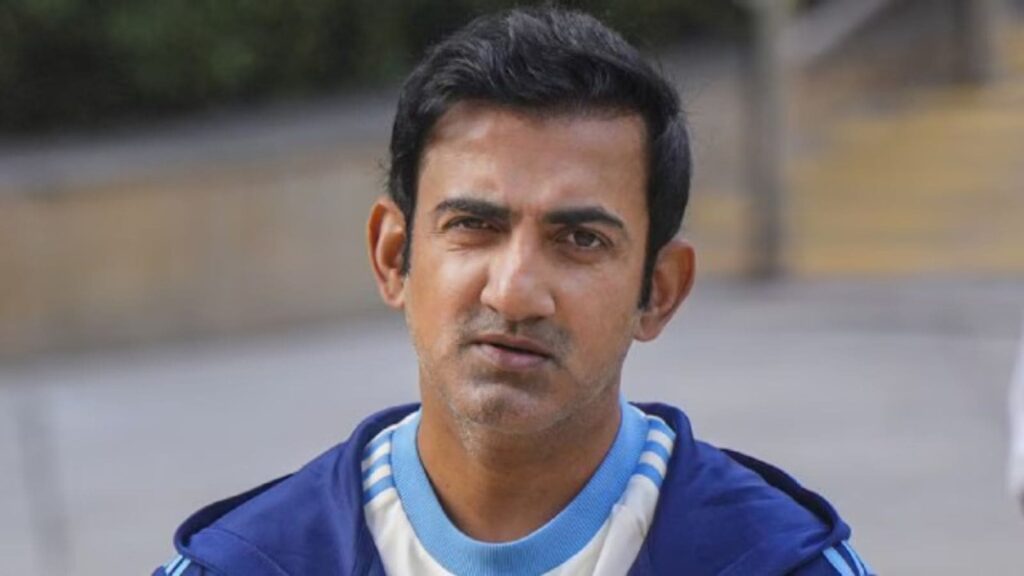Under head coach Gautam Gambhir, India has been gradually moving away from a player-centric team to one that fits into the coach’s mould, which many franchise teams have already embraced across T20 leagues. While Gambhir may still be figuring out his winning formula in the longest format, having endured a treacherous ride, the next six months will see him go about assembling a T20 squad potentially capable of defending the World Cup crown on home soil next February-March.
While most of the pieces are more or less on the table and already fixed, there is one key hole – identifying the finisher– that distorts the picture. Making the search fascinating is Gambhir’s concept of a finisher.
Across his stint as a captain and coach of Kolkata Knight Riders, the finisher wasn’t a tag he preferred to stick to the No 6 or 7 on his tactical board. He firmly believes that a chase shouldn’t be taken to the last over. “I have never understood why the finisher’s tag is given only to Nos. 5 to 7. An opener can also be a finisher. A No. 11 can also be a finisher. This has just been created by the media,” Gambhir once said. “There was probably no finisher 10 years ago. There can’t be a better finisher than Virat Kohli because of the number of games he has won. So don’t call only the Nos. 5, 6 and 7 as finishers. Whoever scores the last run is a finisher.”
 Virat Kohli in action. (File photo)
Virat Kohli in action. (File photo)
Like most good T20 outfits, Gambhir is a staunch believer that the top-order should get the job done while the rest of the batting line-up should be fluid enough to complement the top three.
So the finisher’s job – the most challenging one in T20s — isn’t entrusted to one batsman as the odds of failure are a lot less. So he prefers to keep everyone engaged in the role with fluidity being the common element. It is what India’s T20 batting has become.
Depth: A non-negotiable
In 15 T20Is under him, Gambhir has already shown batting depth will be a non-negotiable element. He has also gone a level up and employed a flexible batting model, which makes it tough for opposition to plan the match-ups around nailed-on spots. In short, there is flexibility in India’s ranks like never before. With a preference to keep left-right combo running along the batting order, the finisher role has been a merry-go-round.
In his first series in Sri Lanka, he depended on Hardik Pandya, Rinku Singh, Riyan Parag, Axar Patel, Shivam Dube and Washington Sundar and shuffled them in every game. With Nitish Kumar Reddy coming along during Bangladesh series, Gambhir got more adventurous in utilising all-rounders who are giving him at least six bowling options.
Story continues below this ad
With Pandya and Axar being sure starters and slotted below Surya, there is one spot that is still up for grabs. If India see Pandya as their new ball bowler, like they did against England, two spots could open up and apart from Rinku, Parag, Washington, Nitish and Dube vying for the two slots, India also have Jitesh Sharma in contention should they choose to alter their top-three.
 Hardik Pandya in action. (FILE photo)
Hardik Pandya in action. (FILE photo)
With multifaceted players being Gambhir’s priority, his choices in the XI have seldom deviated from this plan. But what is also undeniable is India have to identify the two batsmen who will shore up this model. Among the lot, Rinku’s temperament has stood out. Not a power-hitter who relies on muscle power, Rinku’s six-hitting range is extraordinary against both pace and spin. The problem is he is one-dimensional and in the IPL, hasn’t had the game time to strengthen his case. Then there is Parag, another batsman who is used to batting lower down the order for Rajasthan Royals and Assam in Syed Mushtaq Ali. Being designated at No 5 or 6, they look every bit a natural fit to the slot. Parag’s off-spin delivered with a low trajectory like Kedhar Jadhav won’t be overlooked either.
Beyond the two are the two all-rounders Washington and Nitish, where one of them will invariably be in the mix for a spot depending on the conditions. Expected to be key assets thanks to their bowling, there is a bit of unknown about both when it comes to finding consistency in long-range hitting. Washington did show in England that there is still plenty of scope to expand his batting bandwidth, Nitish did show his capabilities against Bangladesh. Further tests are still needed and beginning with the Asia Cup, India has enough time to sort this out.
That India have Pandya and Axar, two versatile batsmen, is a luxury that no team can boast. If there is one aspect that is seriously missing in India’s batting ranks, it is the absence of a power-hitter like Tim David or Nicholas Pooran. To cover that, India has chosen to strengthen other aspects. So finding two more batsmen to support Pandya and Axar would bolster their chances of becoming the first team to win successive T20 World Cups.


